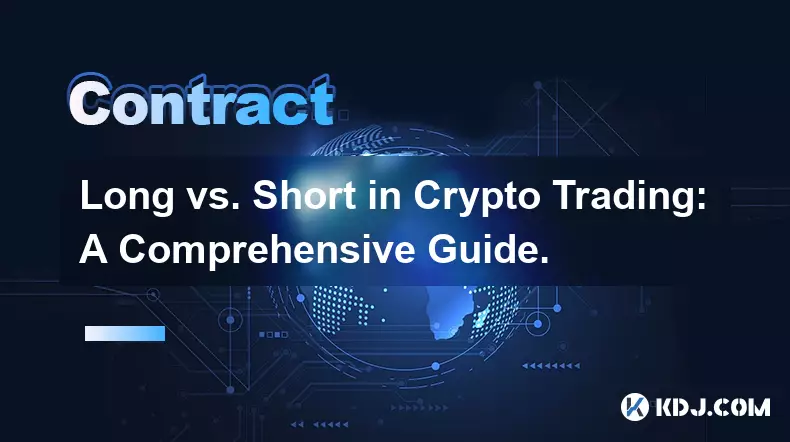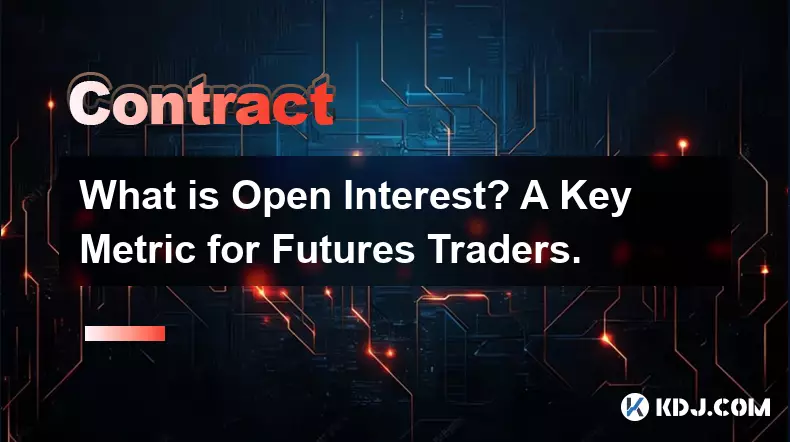-
 bitcoin
bitcoin $99177.955738 USD
-7.32% -
 ethereum
ethereum $3187.183061 USD
-12.38% -
 tether
tether $0.999809 USD
0.00% -
 xrp
xrp $2.117933 USD
-9.42% -
 bnb
bnb $906.710033 USD
-9.17% -
 solana
solana $149.367737 USD
-10.74% -
 usd-coin
usd-coin $0.999816 USD
0.01% -
 tron
tron $0.281498 USD
-0.38% -
 dogecoin
dogecoin $0.156292 USD
-8.00% -
 cardano
cardano $0.500744 USD
-10.19% -
 hyperliquid
hyperliquid $38.087358 USD
-4.58% -
 chainlink
chainlink $14.097831 USD
-8.54% -
 bitcoin-cash
bitcoin-cash $463.329916 USD
-9.22% -
 ethena-usde
ethena-usde $0.999078 USD
-0.01% -
 unus-sed-leo
unus-sed-leo $9.475862 USD
-0.79%
Mastering the Trailing Stop Order: A Powerful Tool for Traders.
A trailing stop order dynamically locks in crypto profits by adjusting with price trends, offering automated protection against sudden reversals.
Nov 04, 2025 at 05:54 pm

Understanding the Trailing Stop Order in Crypto Trading
1. A trailing stop order is a dynamic risk management tool that adjusts automatically as the price of a cryptocurrency moves in a favorable direction. Unlike a standard stop-loss order, which remains fixed at a predetermined price level, the trailing stop follows the asset’s market price by a specified percentage or dollar amount. This allows traders to lock in profits while still giving room for upward movement.
2. In volatile markets such as the cryptocurrency space, where prices can swing dramatically within minutes, using a trailing stop helps protect gains without requiring constant manual monitoring. For instance, if a trader buys Bitcoin at $30,000 and sets a 5% trailing stop, the stop price will rise as Bitcoin’s price increases, but it will not fall unless the market reverses sharply.
3. The mechanism behind the trailing stop relies on real-time price tracking. As long as the market continues to move upward, the stop price trails behind, preserving an increasing portion of profit. If the price drops by the defined threshold—say 5%—the order triggers a market sell, closing the position to prevent further losses.
4. This flexibility makes the trailing stop particularly useful for both short-term day traders and longer-term investors who wish to automate part of their exit strategy. It balances the desire to maximize returns with the need to minimize downside exposure.
5. Many major exchanges like Binance, Coinbase Pro, and Kraken offer trailing stop functionality either natively or through third-party trading bots. Understanding how each platform implements this feature—whether based on last traded price, bid/ask, or time intervals—is crucial for optimal execution.
Advantages of Using Trailing Stops in the Volatile Crypto Market
1. One of the most significant benefits is emotion-free trading. Cryptocurrency markets are known for inducing psychological stress due to rapid price fluctuations. A trailing stop removes the temptation to exit too early out of fear or hold too long out of greed, enforcing discipline through automation.
2. It enhances profit protection during strong bullish trends. When altcoins experience parabolic rallies, setting a trailing stop ensures that traders don’t miss out entirely if the trend suddenly reverses. The order captures much of the upside while providing a safety net.
3. Trailing stops also reduce the need for constant screen time. Given that crypto markets operate 24/7, it's impractical for most traders to monitor positions around the clock. With a well-configured trailing stop, they can maintain control even when offline.
4. Another advantage is adaptability across different strategies. Scalpers might use tight trailing stops (1–2%) to secure quick gains, while swing traders may opt for wider margins (8–15%) to accommodate normal volatility without premature exits.
5. Some advanced platforms allow conditional logic, enabling users to combine trailing stops with other indicators such as volume spikes or moving averages, creating more nuanced exit rules tailored to specific trading systems.
Avoiding Common Pitfalls with Trailing Stop Orders
1. Setting the trailing percentage too narrow can lead to premature liquidation. Cryptocurrencies often exhibit sharp intraday swings; a 3% buffer might be insufficient for assets like Dogecoin or Shiba Inu, which regularly move 10% or more in a single day.
2. Relying solely on trailing stops without considering overall portfolio allocation can create false confidence. No automated tool eliminates risk entirely, especially during black swan events such as exchange hacks or regulatory crackdowns, where slippage can render even well-placed stops ineffective.
3. Misunderstanding the difference between 'trailing stop limit' and 'trailing stop market' orders can result in unexpected outcomes. A trailing stop market sells at the best available price once triggered, which may differ significantly from the trigger price during flash crashes. A stop limit specifies a minimum sale price but risks non-execution if liquidity dries up.
4. Failing to adjust trailing parameters after major news or macroeconomic shifts can leave positions vulnerable. For example, ahead of Federal Reserve announcements or ETF approval rumors, increased volatility may warrant temporarily widening the trailing distance.
5. Overusing trailing stops across all holdings may lead to fragmented exits and suboptimal tax implications, especially in jurisdictions where frequent trading triggers higher capital gains liabilities. Strategic deployment based on asset behavior yields better results than blanket application.
Frequently Asked Questions
What happens to a trailing stop order if the exchange goes down?If the exchange experiences downtime, the trailing stop may fail to execute, leaving the position exposed. Hosted solutions depend entirely on server availability and connectivity. To mitigate this risk, some traders use decentralized tools or external bots running on private servers with multiple API connections.
Can I set a trailing stop on futures positions?Yes, most derivatives platforms support trailing stops for perpetual and futures contracts. However, funding rates and leverage amplify both gains and risks. A sudden liquidation cascade could trigger the stop before price stabilizes, so caution is advised when combining high leverage with automated exits.
Do all cryptocurrencies support trailing stop orders equally?No. Highly liquid assets like Bitcoin and Ethereum typically have smoother executions due to deep order books. Low-cap altcoins with sparse liquidity may suffer from slippage, causing the actual fill price to deviate significantly from the intended level, undermining the effectiveness of the trailing mechanism.
How do I determine the right trailing percentage?The ideal percentage depends on historical volatility and trading style. Analyzing average true range (ATR) over recent periods helps identify normal price noise. Conservative traders might use 1.5x the ATR, while aggressive ones accept tighter buffers. Backtesting on past data provides insight into performance under various conditions.
Disclaimer:info@kdj.com
The information provided is not trading advice. kdj.com does not assume any responsibility for any investments made based on the information provided in this article. Cryptocurrencies are highly volatile and it is highly recommended that you invest with caution after thorough research!
If you believe that the content used on this website infringes your copyright, please contact us immediately (info@kdj.com) and we will delete it promptly.
- Bitcoin's Wild Ride: Saylor, Kiyosaki, and the Quest for $200K
- 2025-11-05 10:50:13
- Culex, Cardano, and Aster: A Crypto Cocktail of Mosquitoes, Dips, and CZ Fuel
- 2025-11-05 11:00:17
- Crypto Presales, Coin Growth, and Established Coins: Navigating the 2025 Buzz
- 2025-11-05 11:00:17
- La Culex, Crypto Investment, and Pudgy Penguins: A NYC Perspective
- 2025-11-05 10:30:13
- Zcash Defies Crypto Crash: Reversal Risk on the Horizon?
- 2025-11-05 11:00:01
- Score Big with BetMGM: NBA, NFL, and the TOP150 Bonus Code
- 2025-11-05 08:50:13
Related knowledge

Long vs. Short in Crypto Trading: A Comprehensive Guide.
Nov 04,2025 at 07:39pm
Understanding Long and Short Positions in Cryptocurrency Markets1. In crypto trading, taking a long position means buying a cryptocurrency with the ex...

The 2025 Guide to Profitable Crypto Futures and Derivatives Trading.
Nov 01,2025 at 07:39pm
Understanding Crypto Futures and Derivatives in 20251. Crypto futures are financial contracts obligating the buyer to purchase, or the seller to sell,...

Navigating a Bear Market: Shorting Strategies for Crypto Futures.
Nov 03,2025 at 07:18pm
Understanding Bear Market Dynamics in Crypto1. A bear market in the cryptocurrency space is characterized by prolonged price declines, often driven by...

What is Open Interest? A Key Metric for Futures Traders.
Nov 03,2025 at 11:18pm
Understanding Open Interest in Cryptocurrency Futures1. Open interest refers to the total number of active futures contracts that have not been settle...

How to Trade Crypto Futures on Bybit: A Complete Walkthrough.
Nov 04,2025 at 10:50pm
Setting Up Your Bybit Account for Futures Trading1. Visit the official Bybit website and click on the 'Sign Up' button to create a new account. Provid...

Identifying Support and Resistance Levels for Crypto Contract Trading.
Nov 04,2025 at 06:15pm
Understanding Support and Resistance in Crypto Markets1. Support and resistance levels are foundational concepts in technical analysis, especially wit...

Long vs. Short in Crypto Trading: A Comprehensive Guide.
Nov 04,2025 at 07:39pm
Understanding Long and Short Positions in Cryptocurrency Markets1. In crypto trading, taking a long position means buying a cryptocurrency with the ex...

The 2025 Guide to Profitable Crypto Futures and Derivatives Trading.
Nov 01,2025 at 07:39pm
Understanding Crypto Futures and Derivatives in 20251. Crypto futures are financial contracts obligating the buyer to purchase, or the seller to sell,...

Navigating a Bear Market: Shorting Strategies for Crypto Futures.
Nov 03,2025 at 07:18pm
Understanding Bear Market Dynamics in Crypto1. A bear market in the cryptocurrency space is characterized by prolonged price declines, often driven by...

What is Open Interest? A Key Metric for Futures Traders.
Nov 03,2025 at 11:18pm
Understanding Open Interest in Cryptocurrency Futures1. Open interest refers to the total number of active futures contracts that have not been settle...

How to Trade Crypto Futures on Bybit: A Complete Walkthrough.
Nov 04,2025 at 10:50pm
Setting Up Your Bybit Account for Futures Trading1. Visit the official Bybit website and click on the 'Sign Up' button to create a new account. Provid...

Identifying Support and Resistance Levels for Crypto Contract Trading.
Nov 04,2025 at 06:15pm
Understanding Support and Resistance in Crypto Markets1. Support and resistance levels are foundational concepts in technical analysis, especially wit...
See all articles










































































